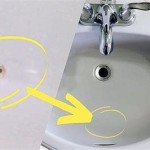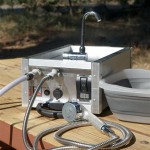What Is The Carbon Sink?
A carbon sink is any natural or artificial reservoir that accumulates and stores some carbon-containing chemical compound for an indefinite period. The main carbon sinks on Earth are the oceans, forests, and soil. The oceans absorb carbon dioxide from the atmosphere and store it in the form of dissolved inorganic carbon. Forests and soil absorb carbon dioxide from the atmosphere and store it in the form of biomass and organic matter, respectively.
Carbon sinks are important because they help to regulate the amount of carbon dioxide in the atmosphere. Carbon dioxide is a greenhouse gas, which means that it traps heat in the atmosphere and contributes to climate change. By absorbing carbon dioxide from the atmosphere, carbon sinks help to reduce the amount of greenhouse gases in the atmosphere and mitigate the effects of climate change.
There are a number of ways to increase the capacity of carbon sinks. One way is to plant more trees. Trees absorb carbon dioxide from the atmosphere and store it in their trunks, branches, and leaves. Another way to increase the capacity of carbon sinks is to improve soil management practices. Soil can store large amounts of organic matter, which helps to reduce the amount of carbon dioxide in the atmosphere.
Carbon sinks are an important part of the Earth's climate system. They help to regulate the amount of carbon dioxide in the atmosphere and mitigate the effects of climate change. By increasing the capacity of carbon sinks, we can help to protect the planet from the worst effects of climate change.
How Do Carbon Sinks Work?
Carbon sinks work by absorbing carbon dioxide from the atmosphere and storing it for an indefinite period. The main carbon sinks on Earth are the oceans, forests, and soil. The oceans absorb carbon dioxide from the atmosphere and store it in the form of dissolved inorganic carbon. Forests and soil absorb carbon dioxide from the atmosphere and store it in the form of biomass and organic matter, respectively.
The process of carbon sequestration is complex and involves a number of different mechanisms. In the oceans, carbon dioxide is absorbed by seawater and converted into dissolved inorganic carbon. Dissolved inorganic carbon can then be stored in the ocean for thousands of years.
In forests, carbon dioxide is absorbed by trees and converted into biomass. Biomass is the organic matter that makes up the trees, including their trunks, branches, and leaves. Trees store carbon in their biomass for as long as they are alive. When trees die, the carbon stored in their biomass is released back into the atmosphere.
In soil, carbon dioxide is absorbed by plants and converted into organic matter. Organic matter is the decaying remains of plants and animals. Soil can store large amounts of organic matter, which helps to reduce the amount of carbon dioxide in the atmosphere.
What Are the Benefits of Carbon Sinks?
Carbon sinks provide a number of benefits, including:
- Climate change mitigation: Carbon sinks help to regulate the amount of carbon dioxide in the atmosphere, which helps to mitigate the effects of climate change.
- Air pollution reduction: Carbon sinks help to remove air pollutants from the atmosphere, which improves air quality.
- Water quality improvement: Carbon sinks help to improve water quality by filtering pollutants from water.
- Soil health improvement: Carbon sinks help to improve soil health by increasing the amount of organic matter in the soil.
- Biodiversity conservation: Carbon sinks provide habitat for a variety of plants and animals, which helps to conserve biodiversity.
How Can We Increase the Capacity of Carbon Sinks?
There are a number of ways to increase the capacity of carbon sinks, including:
- Planting more trees: Trees absorb carbon dioxide from the atmosphere and store it in their biomass. Planting more trees can help to increase the capacity of carbon sinks.
- Improving soil management practices: Soil can store large amounts of organic matter, which helps to reduce the amount of carbon dioxide in the atmosphere. Improving soil management practices can help to increase the capacity of carbon sinks.
- Reducing carbon emissions: Reducing carbon emissions can help to reduce the amount of carbon dioxide in the atmosphere, which will help to increase the capacity of carbon sinks.

Carbon Sink Wikipedia

The Ocean A Carbon Sink Climate Platform

Carbon Sinks And Sources Sopec Sustainable Ohio Public Energy Council

What Are Some Examples Of Carbon Sources And Sinks Socratic

Carbon Sink Definition Comments

Carbon Sinks

What Is A Carbon Sink Worldatlas

Carbon Sources Sinks Trailblazer May 2024

Landmark Study Indicates Weakening Of Ocean Carbon Sink Noaa Climate Gov

Carbon Sinks Nature S Way Of Mitigating Climate Change The Eco Advocate







